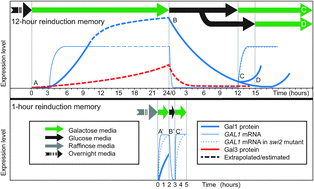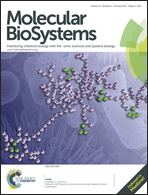The yeast galactose network as a quantitative model for cellular memory
Abstract
Recent experiments have revealed surprising behavior in the yeast galactose (GAL) pathway, one of the preeminent systems for studying gene regulation. Under certain circumstances, yeast cells display memory of their prior nutrient environments. We distinguish two kinds of cellular memory discovered by quantitative investigations of the GAL network and present a conceptual framework for interpreting new experiments and current ideas on GAL memory. Reinduction memory occurs when cells respond transcriptionally to one environment, shut down the response during several generations in a second environment, then respond faster and with less cell-to-cell variation when returned to the first environment. Persistent memory describes a long-term, arguably stable response in which cells adopt a bimodal or unimodal distribution of induction levels depending on their preceding environment. Deep knowledge of how the yeast GAL pathway responds to different sugar environments has enabled rapid progress in uncovering the mechanisms behind GAL memory, which include cytoplasmic inheritance of inducer proteins and positive feedback loops among regulatory genes. This network of genes, long used to study gene regulation, is now emerging as a model system for cellular memory.



 Please wait while we load your content...
Please wait while we load your content...